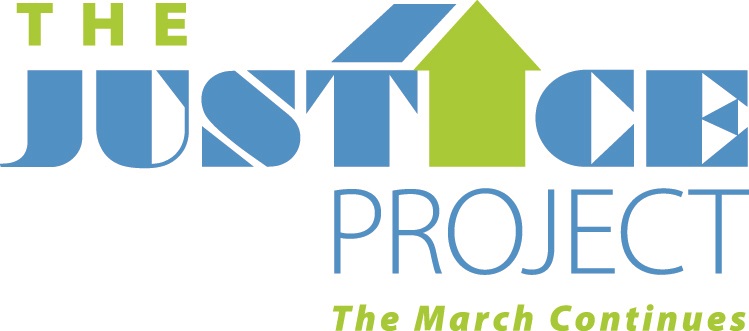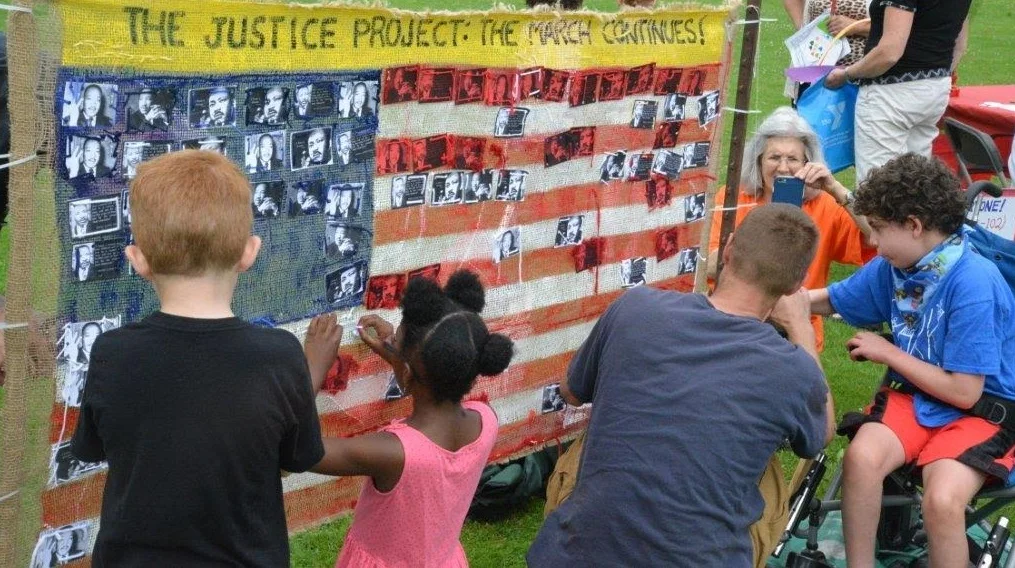PRINCIPLES OF THE WELCOMING COMMUNITY
Established by the Justice Project: The March Continues As a Framework for the Future
The hallmarks of the Welcoming Community are justice for all and an inclusive culture that upholds the rights of all residents, home seekers, employees, and visitors. In the Welcoming Community, all are treated equally regardless of income, race, sex, religion, national origin, presence of children, disability, age, sexual orientation or any other legally protected class.
The Welcoming Community organizes its efforts to fulfill these principles under the spheres of Access, Safety & Engagement. Benchmarks for measuring the accomplishment of each of the nineteen Principles of the Welcoming Community can be downloaded here.
ACCESS
BUSINESS: The community offers a variety of services and retail shopping, especially from small independent businesses. Residents can meet most of their needs locally.
CREDIT: The community works to ensure that banking institutions have offices easily accessible to all residents, and that the institutions treat all persons and all neighborhoods equally.
EDUCATION: Schools offer equitable and excellent public education, serving the needs of every student in the community and creating an open-door culture for all families.
FOOD: All residents live near grocery stores or farmers’ markets with a variety of fresh, culturally diverse, and nutritious food that is affordable on all budgets, and locally grown to the extent possible.
HEALTH CARE AND SAFETY NET: The community provides access for all populations to health care and social services where and when needed, with culturally sensitive resources and services available.
HOUSING: The community offers a variety of housing alternatives to enable people within a wide range of incomes, family types, or abilities to rent or own decent, safe, and integrated places to live.
JOBS: The wages paid by local employers are sufficient to secure housing and subsistence within the community.
Employment practices are humane and safe.
RECREATION AND SERVICES: The community makes low-cost meaningful recreational opportunities available at convenient locations and times to all residents. Public spaces are well-maintained and accessible to all.
TRANSIT: The community makes available affordable, safe, environmentally sound, and conveniently situated and scheduled alternatives to using privately-owned cars for local transportation.
SAFETY
ENVIRONMENT: The community promotes programs and supports regulations that protect its environment.
GUNS: The community makes every effort to prohibit the carrying of firearms in public places and reduce access to firearms by dangerous people. It offers educational opportunities on the safe storage of firearms and the dangers of gun ownership, and closely regulates gun sales and gun facilities.
HATE CRIMES: The community has an intergovernmental protocol for swiftly and categorically responding to hate crimes. The community also supports the victims through care and protection.
POLICE: The community’s security personnel are trained and deployed to treat all residents and visitors with respect
and cultural sensitivity.
SAFE ROADS: The community implements and enforces strict traffic laws and standards that keep the streets safe, well-lit, and accessible for pedestrians, cyclists, and motorists.
ENGAGEMENT
CIVIC PARTICIPATION: Residents participate in a wide array of political, social, cultural, spiritual, environmental & recreational activities.
CULTURE OF WELCOME: The community creates a welcoming spirit through its social offerings, openness, and aesthetically pleasing spaces. It also fosters a culture of mutual trust and understanding, transmitting these values through its schools and cultural programs.
REPRESENTATION: Elected and appointed boards, commissions, schools, and other public institutions and agencies reflect the demographics of the populations they serve, actively soliciting community preferences and incorporating them into governance practices.
TRANSPARENCY OF GOVERNMENT: The community encourages a variety of news outlets in multiple languages, including free and easy access to municipal newsletters and web sites, neighborhood papers, and blogs. These represent a variety of political views and cultures and convey a neighborly, positive tone.
VOLUNTEERISM: The community encourages volunteerism, with talent banks for community groups, government and school boards.





















